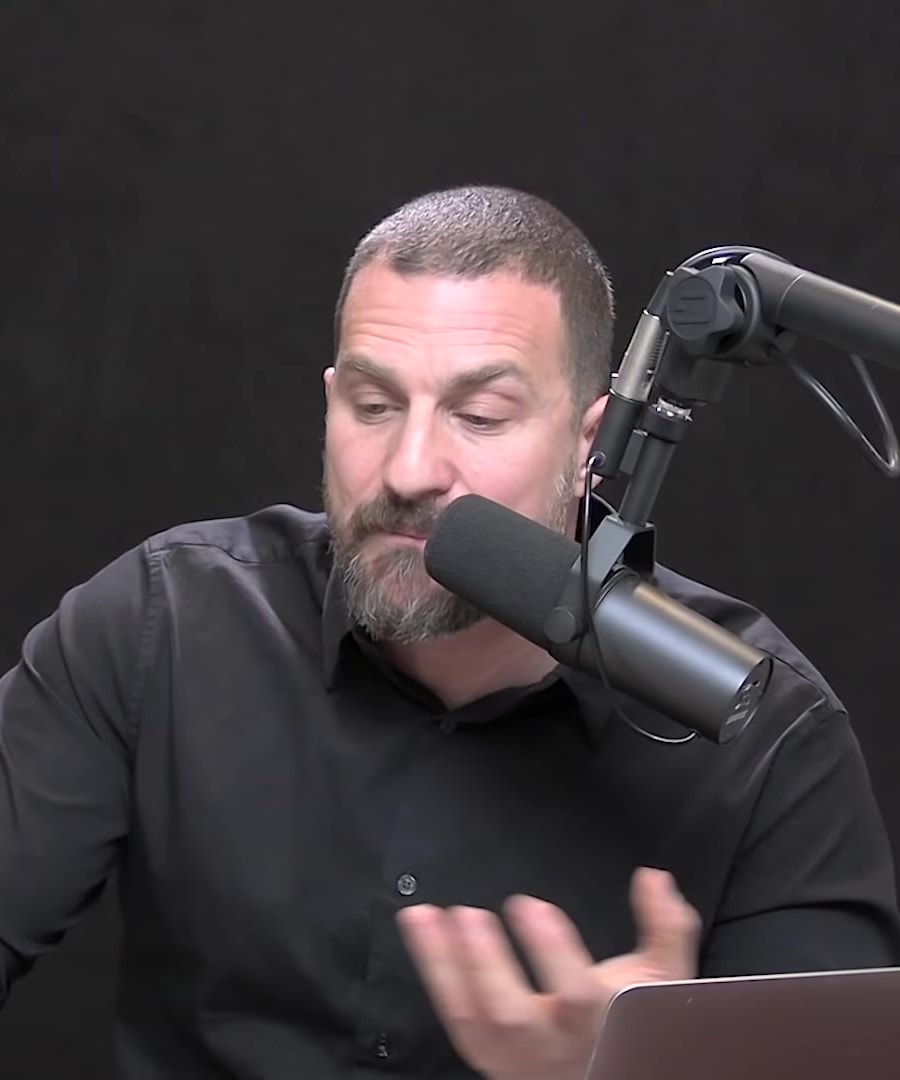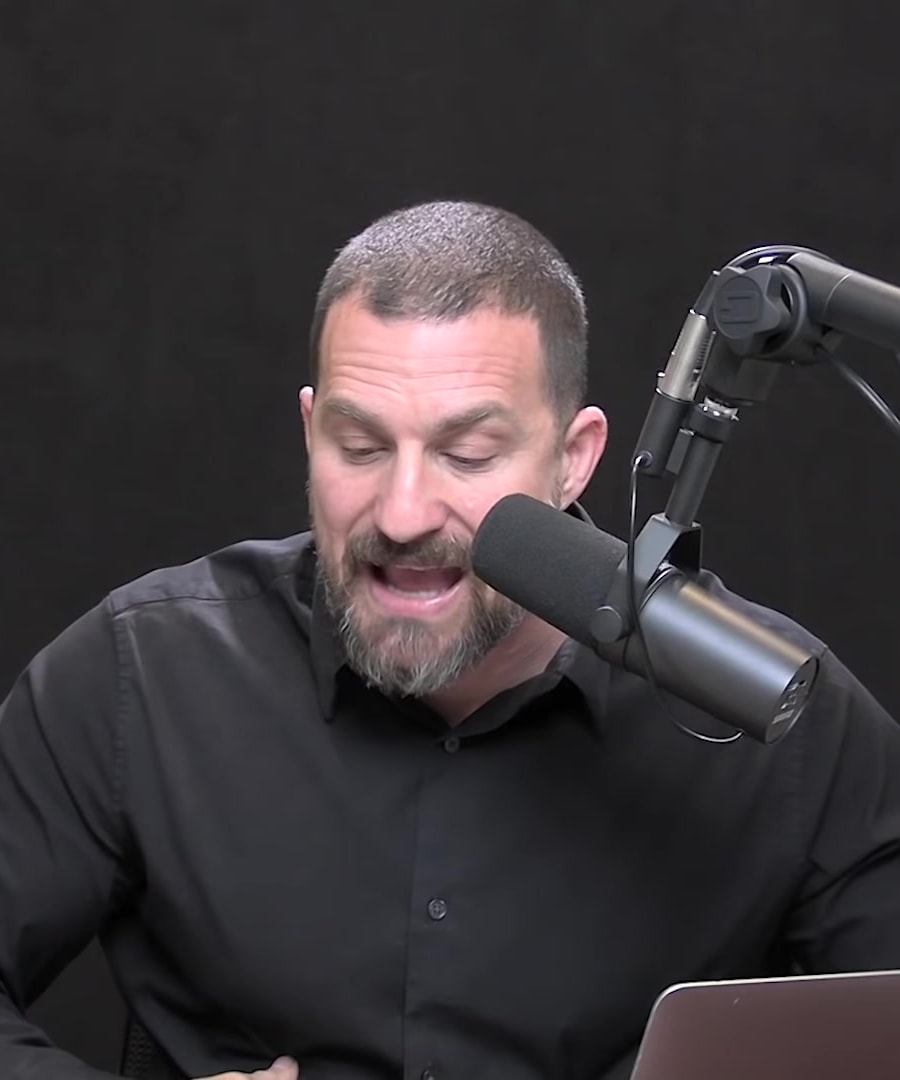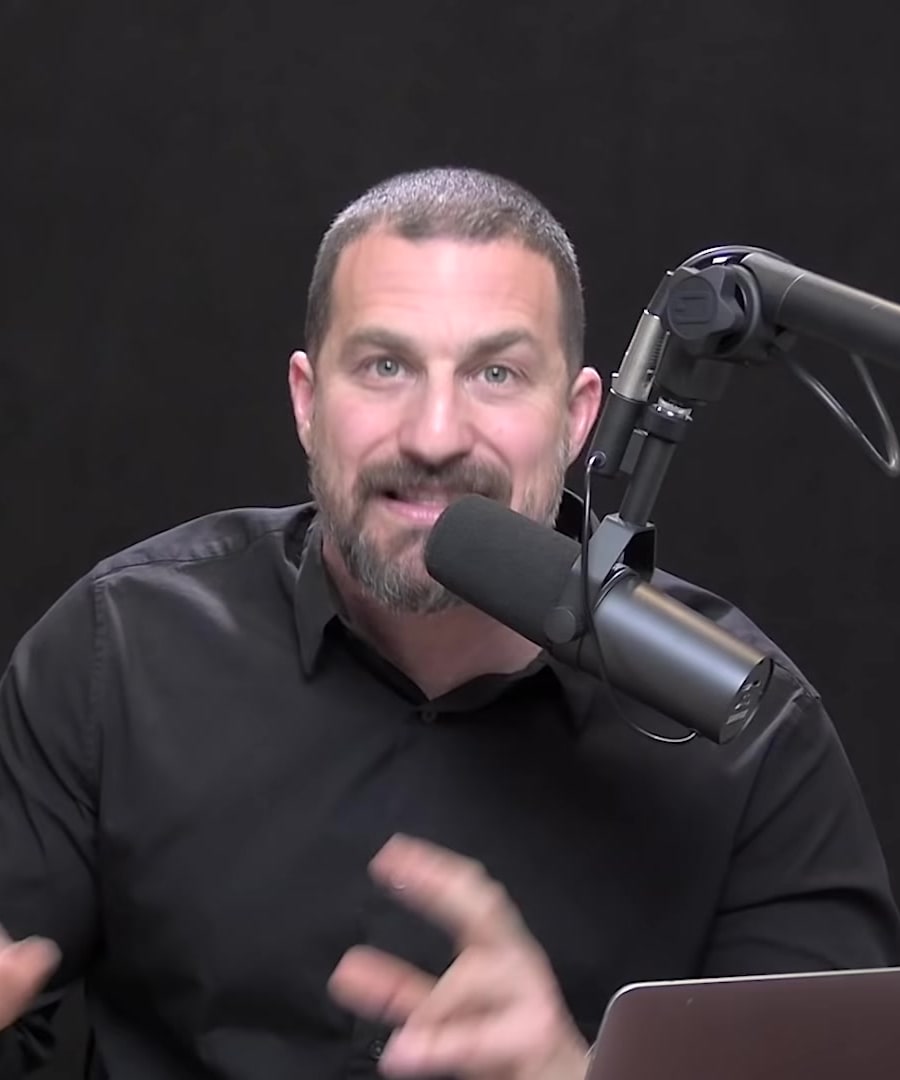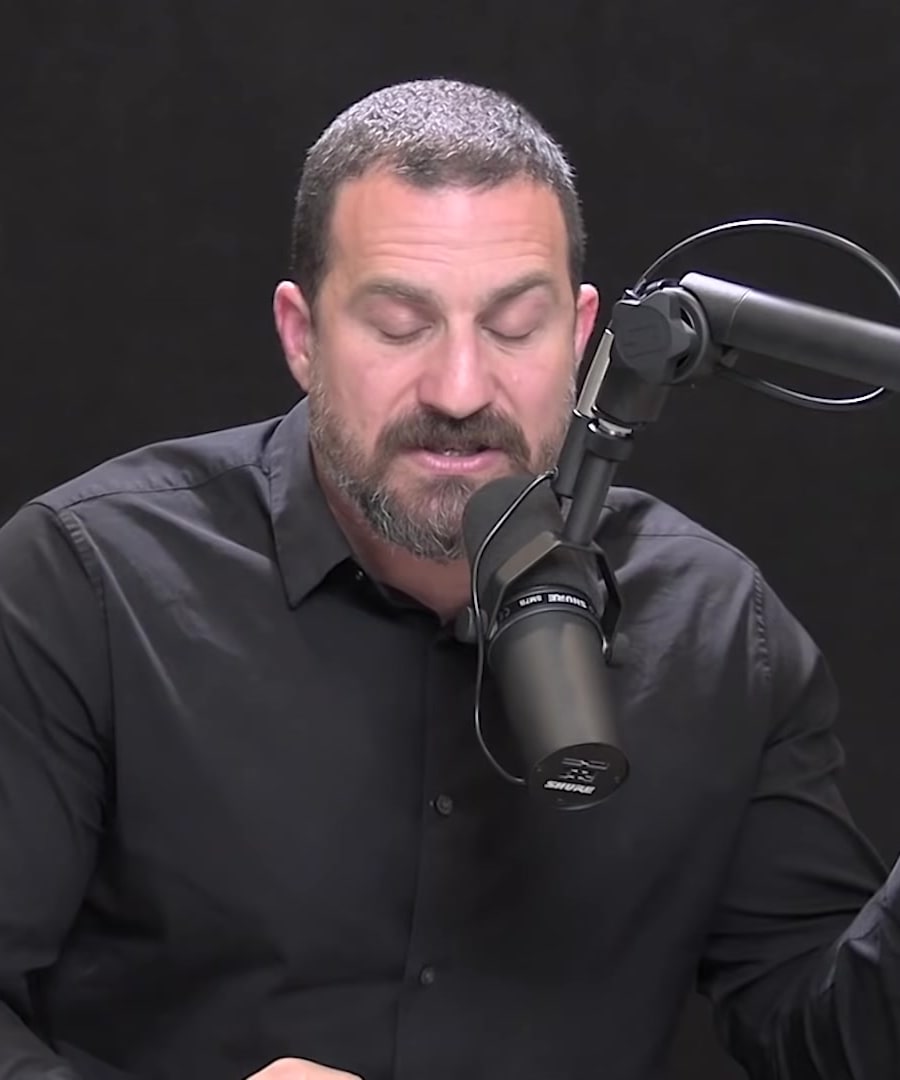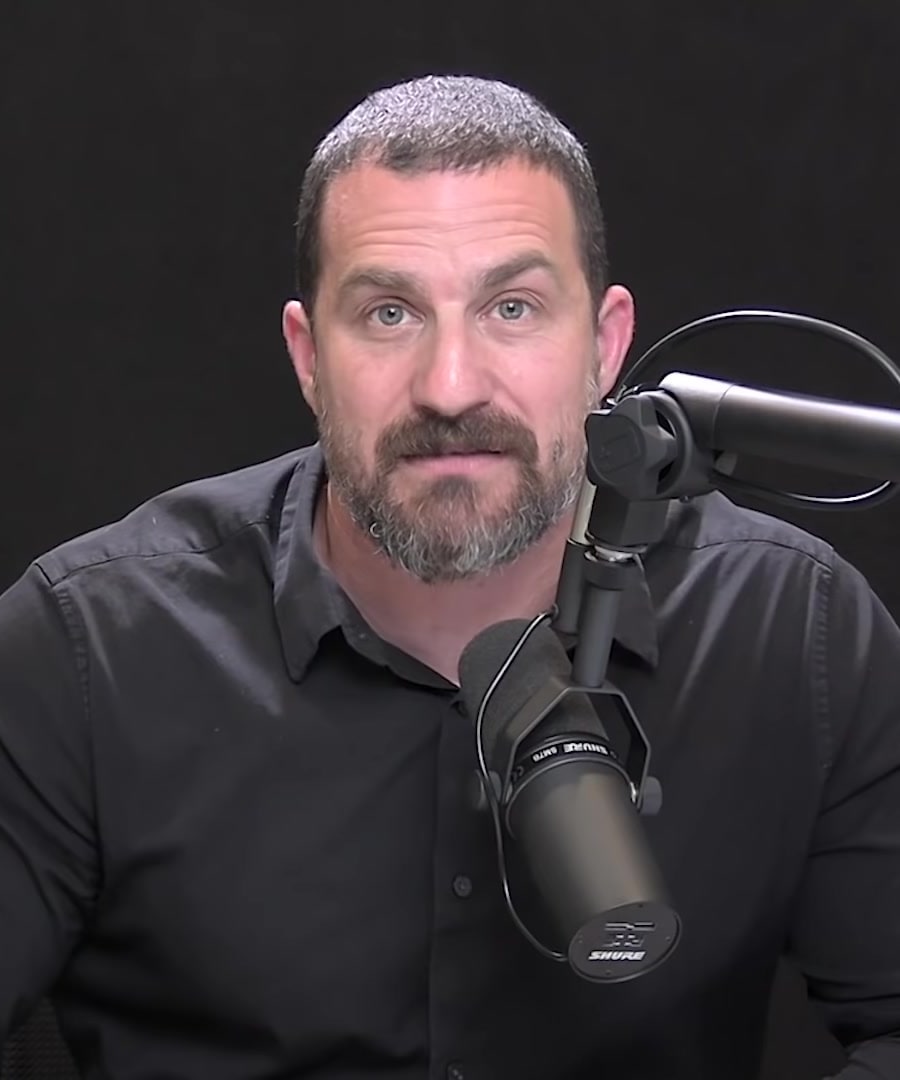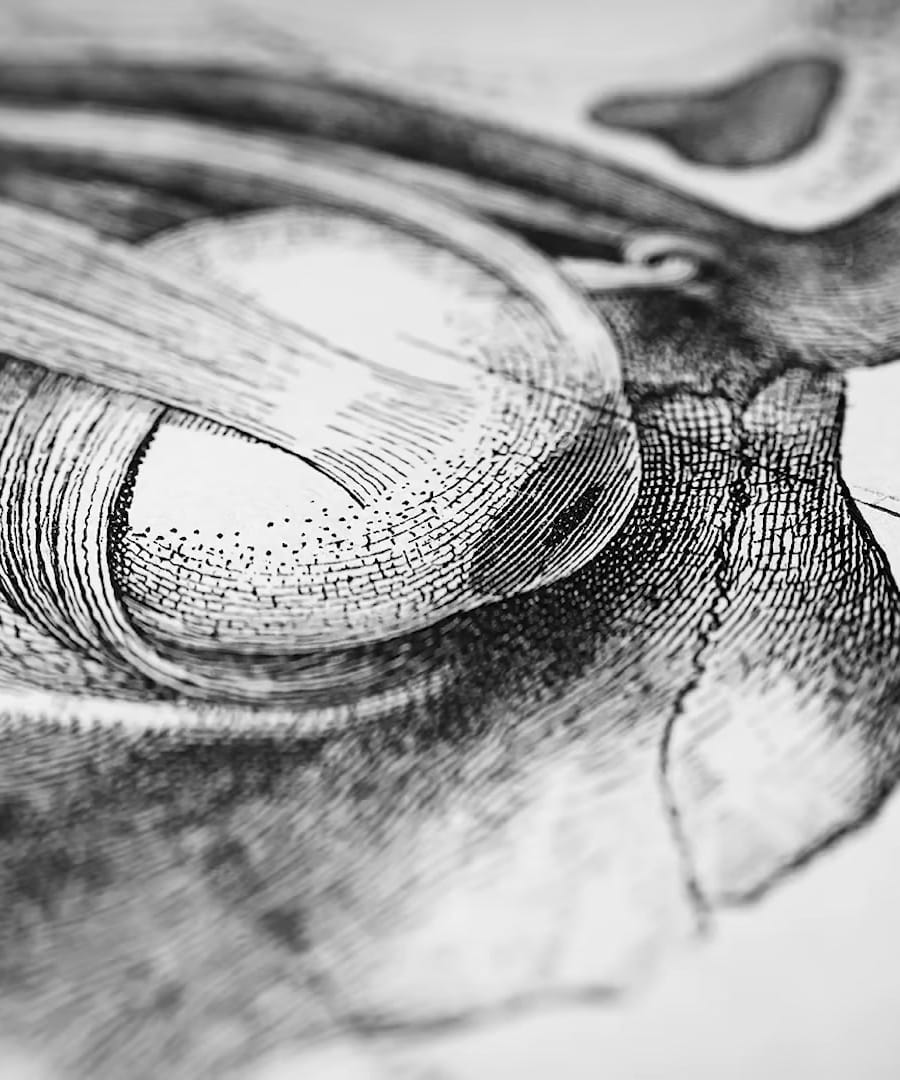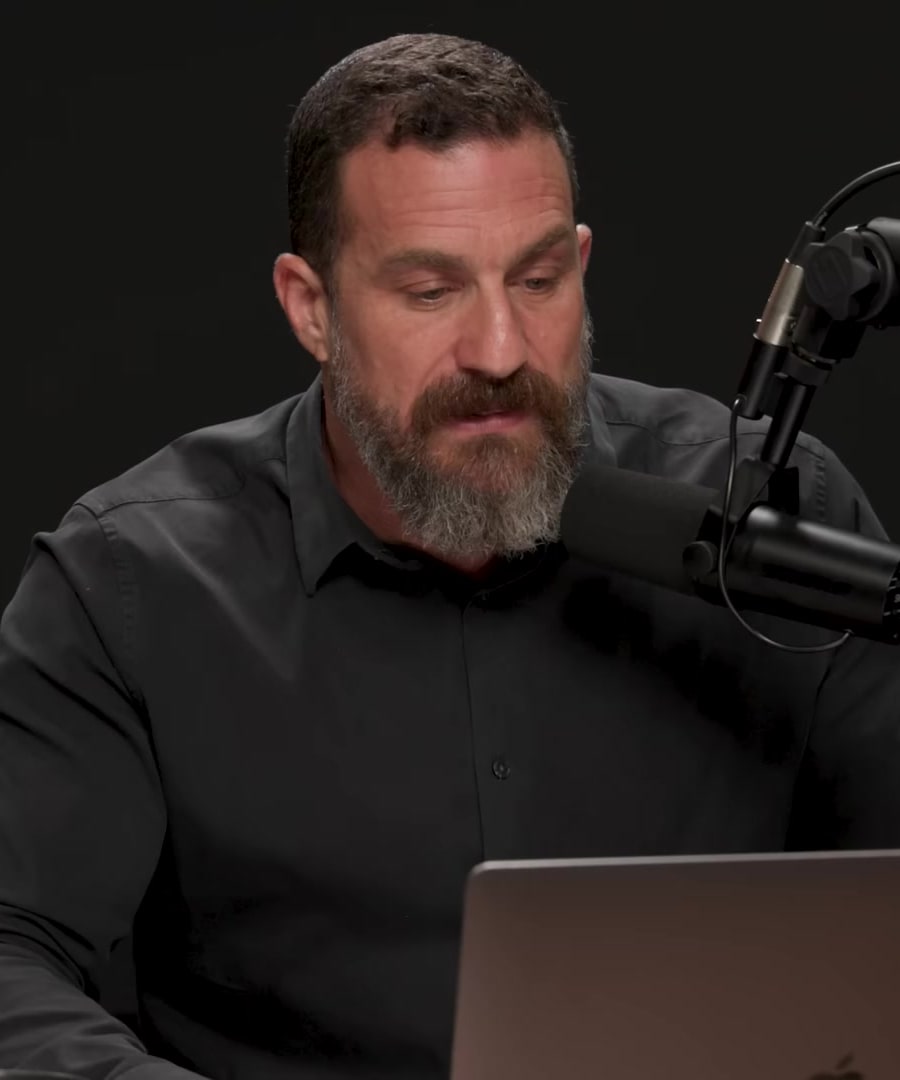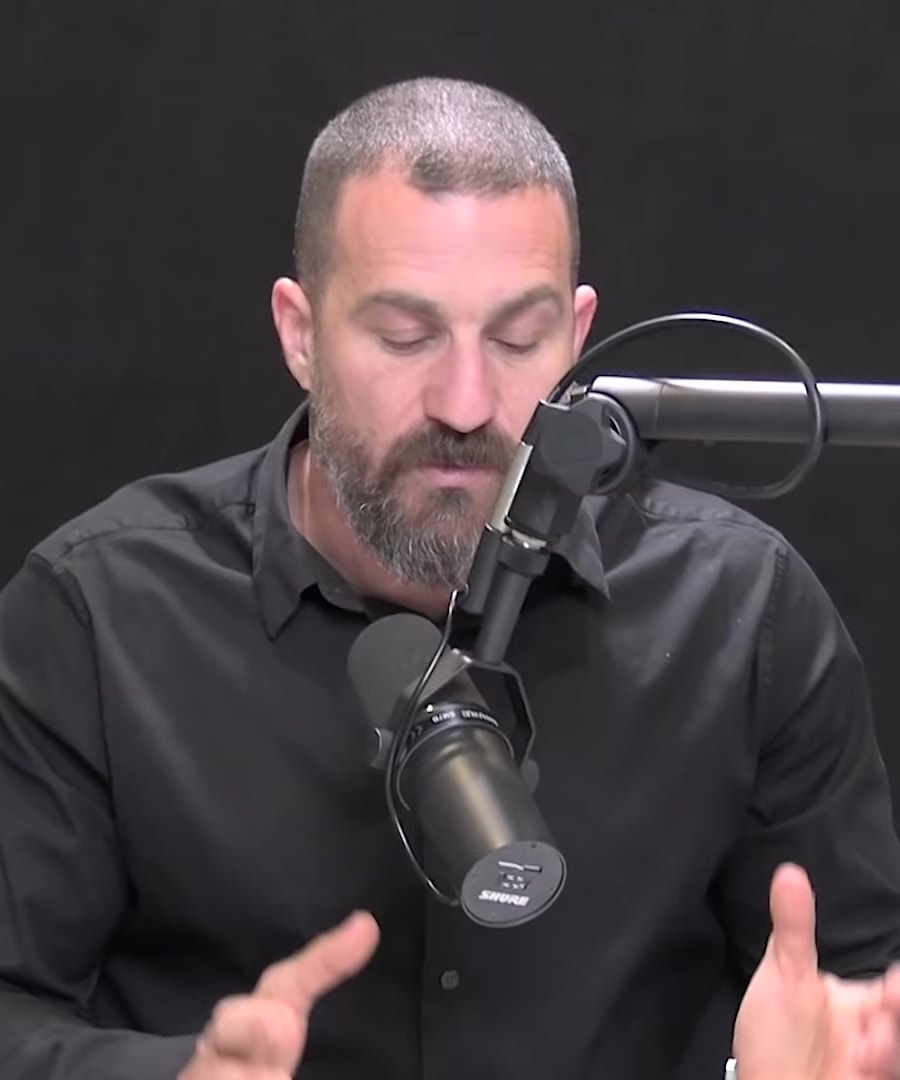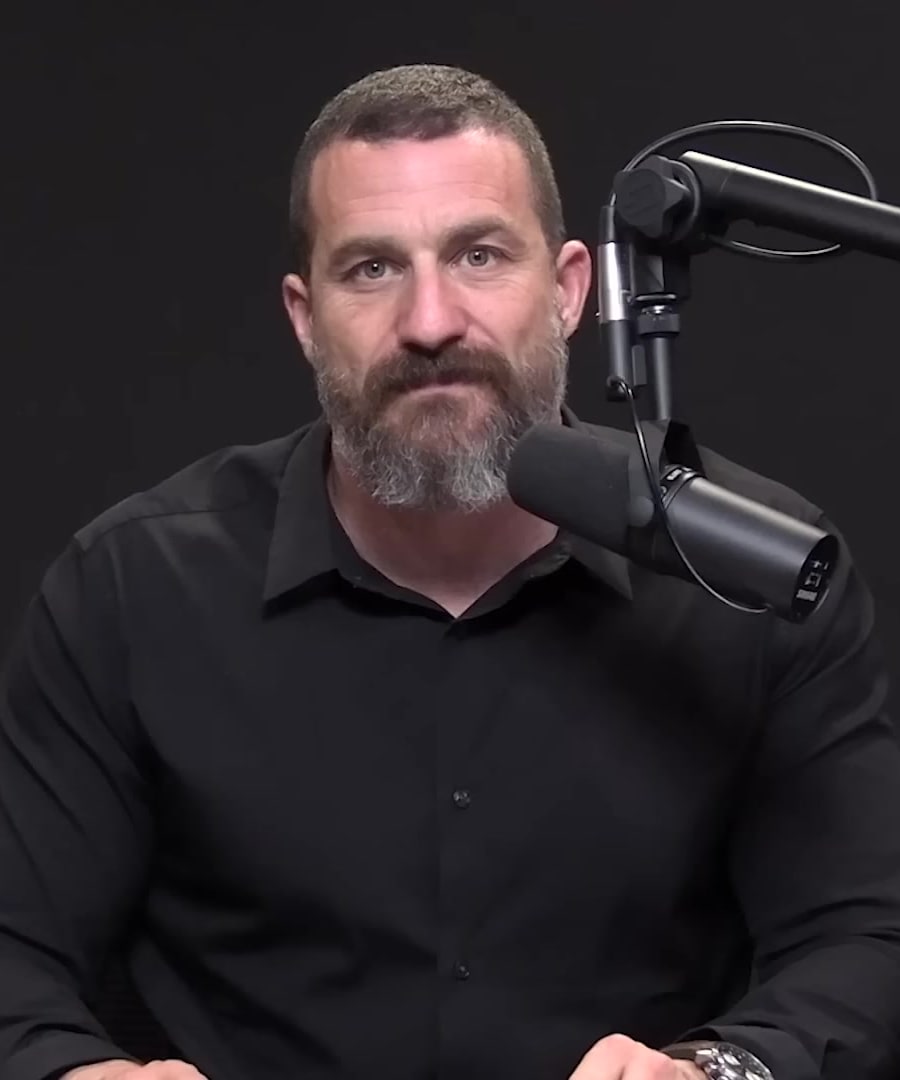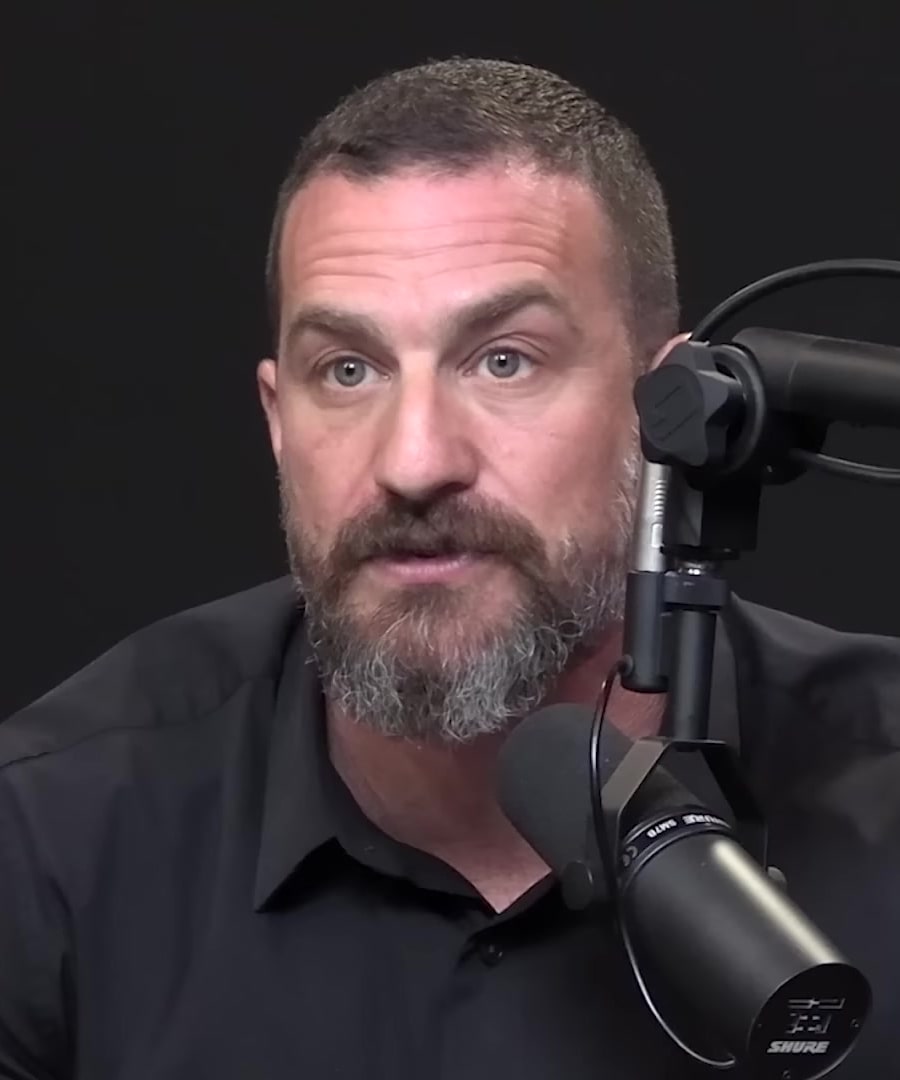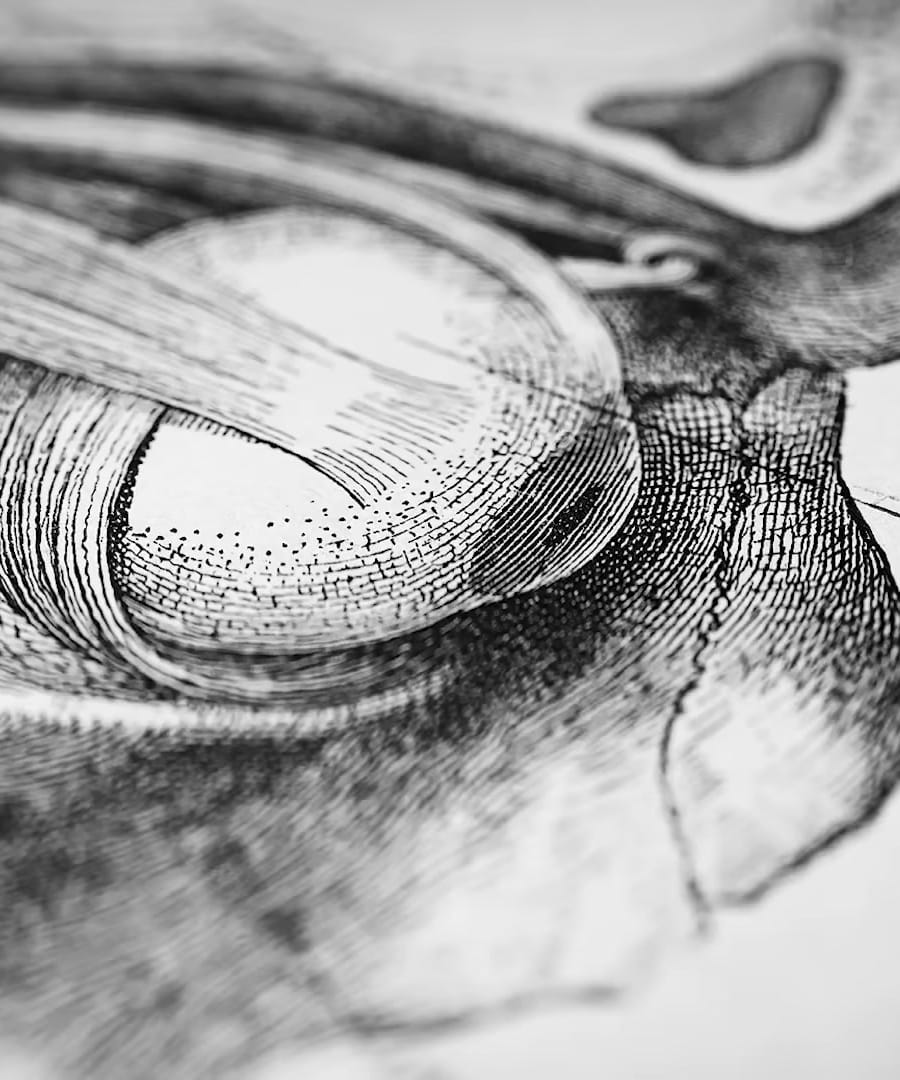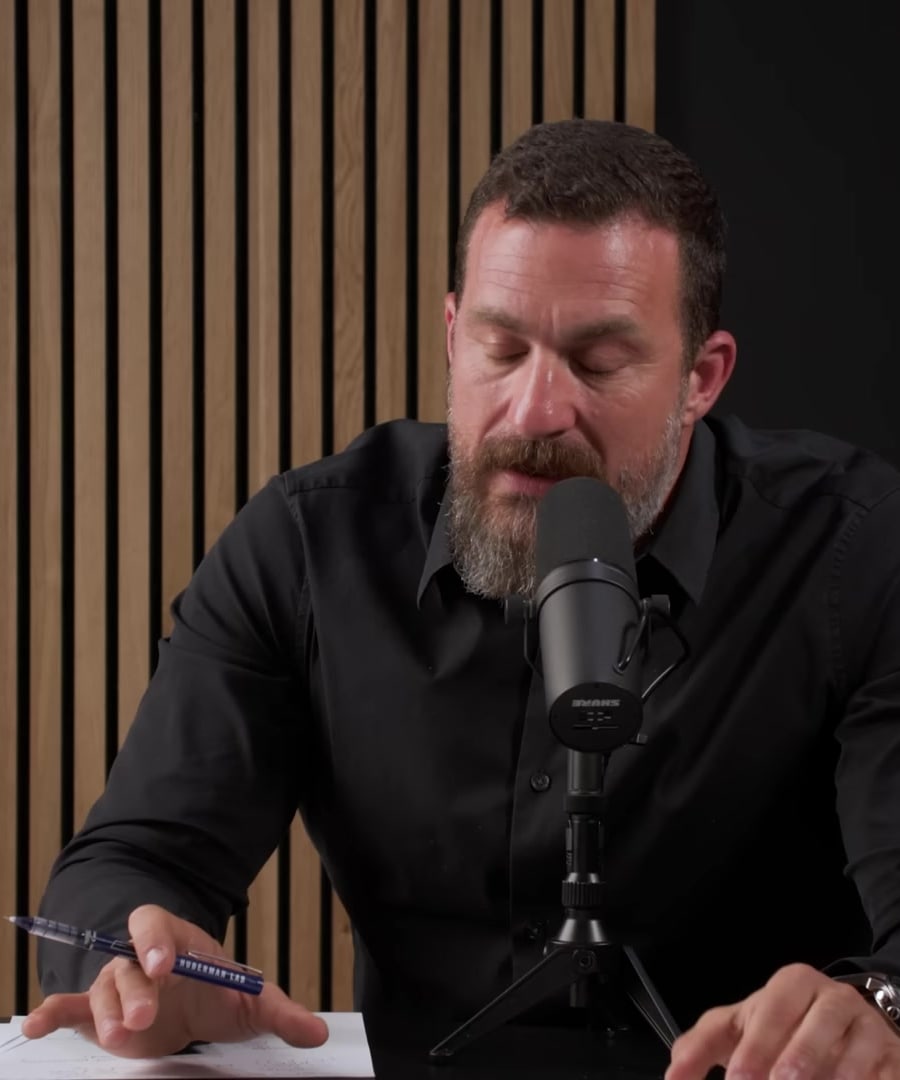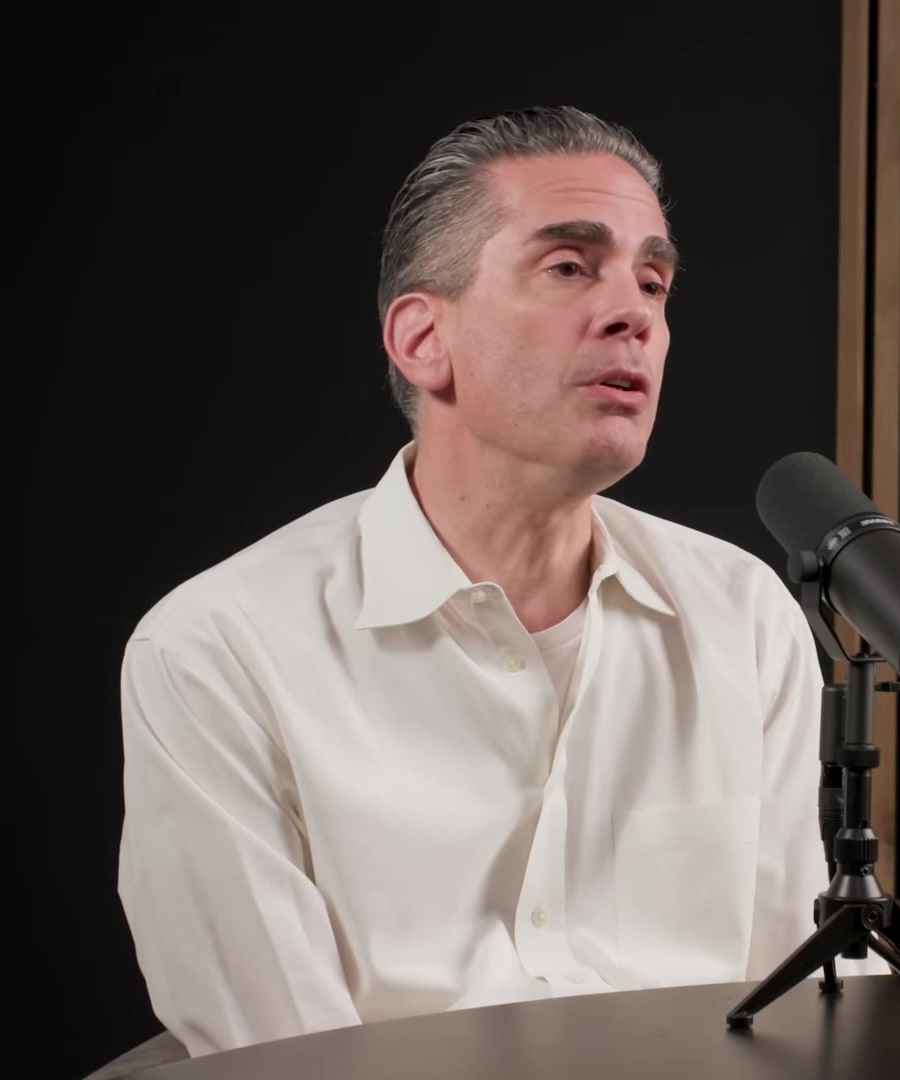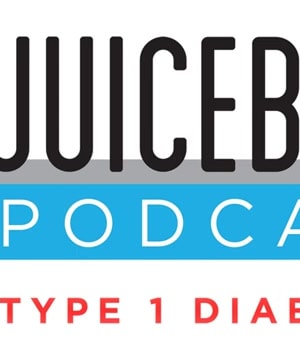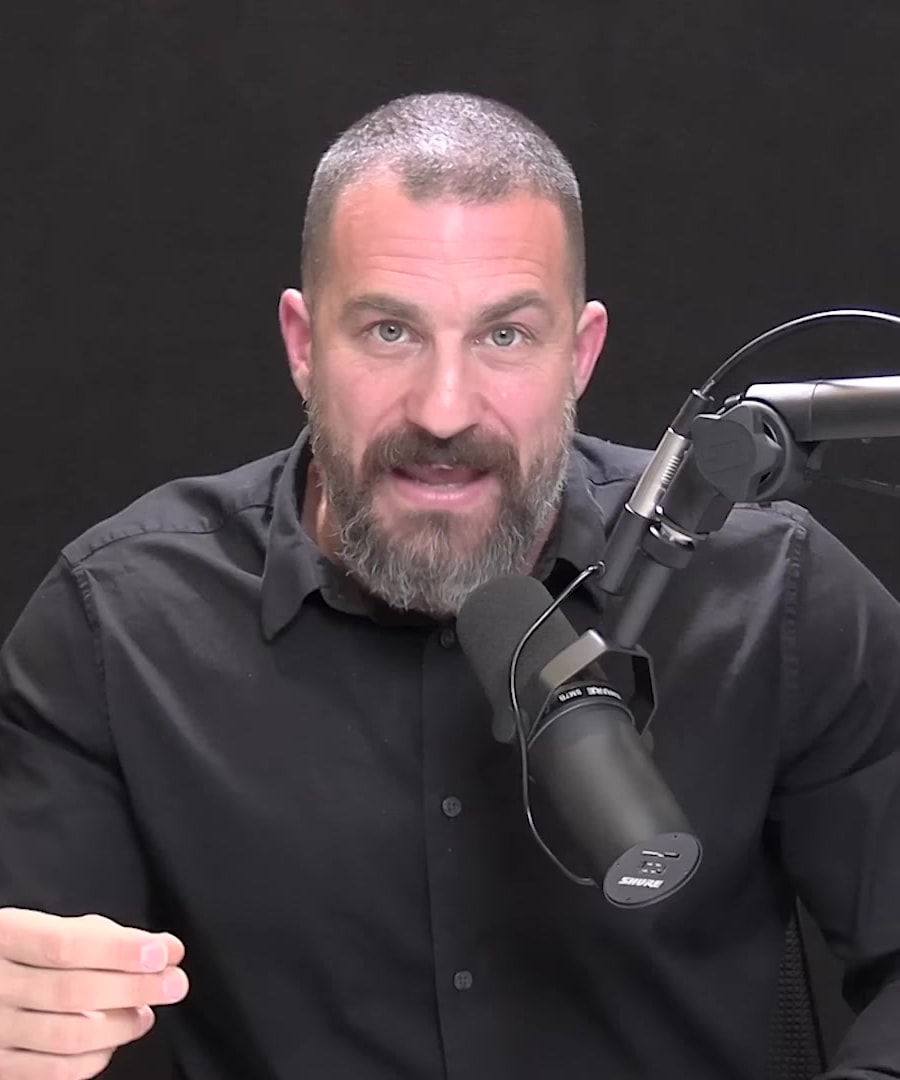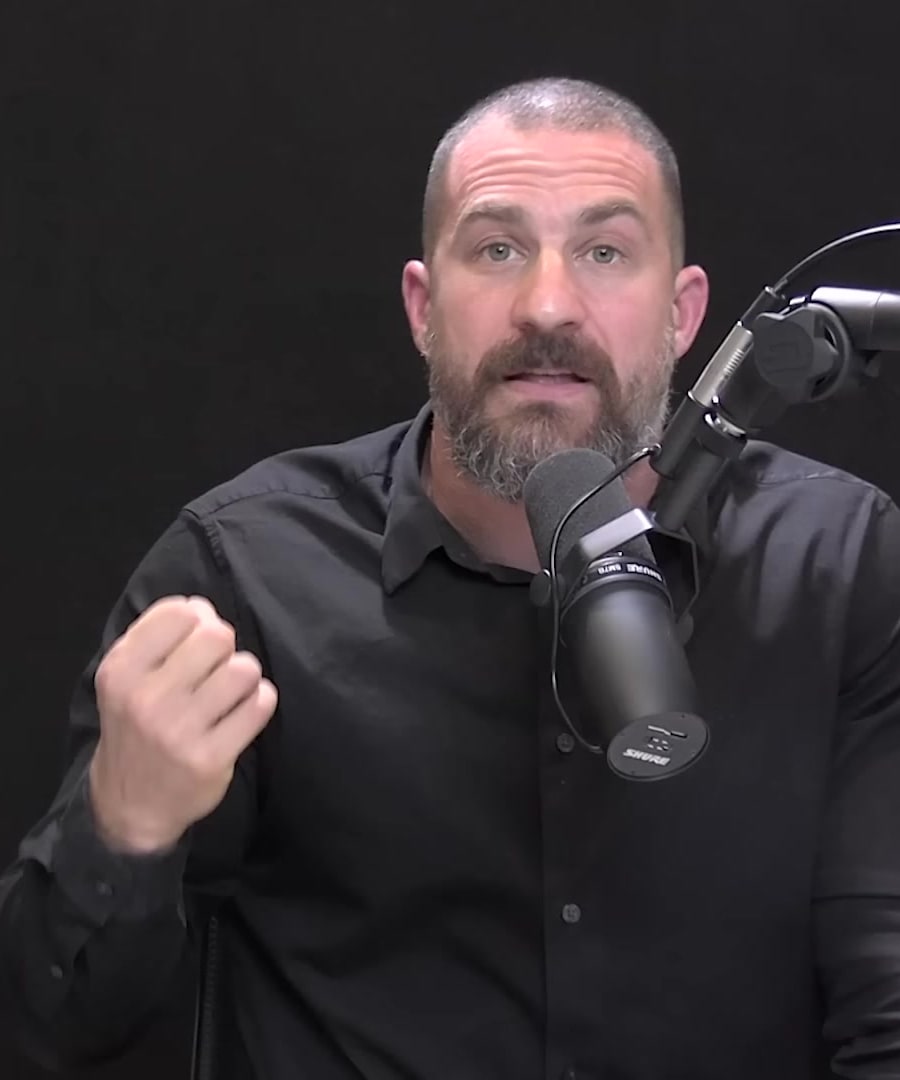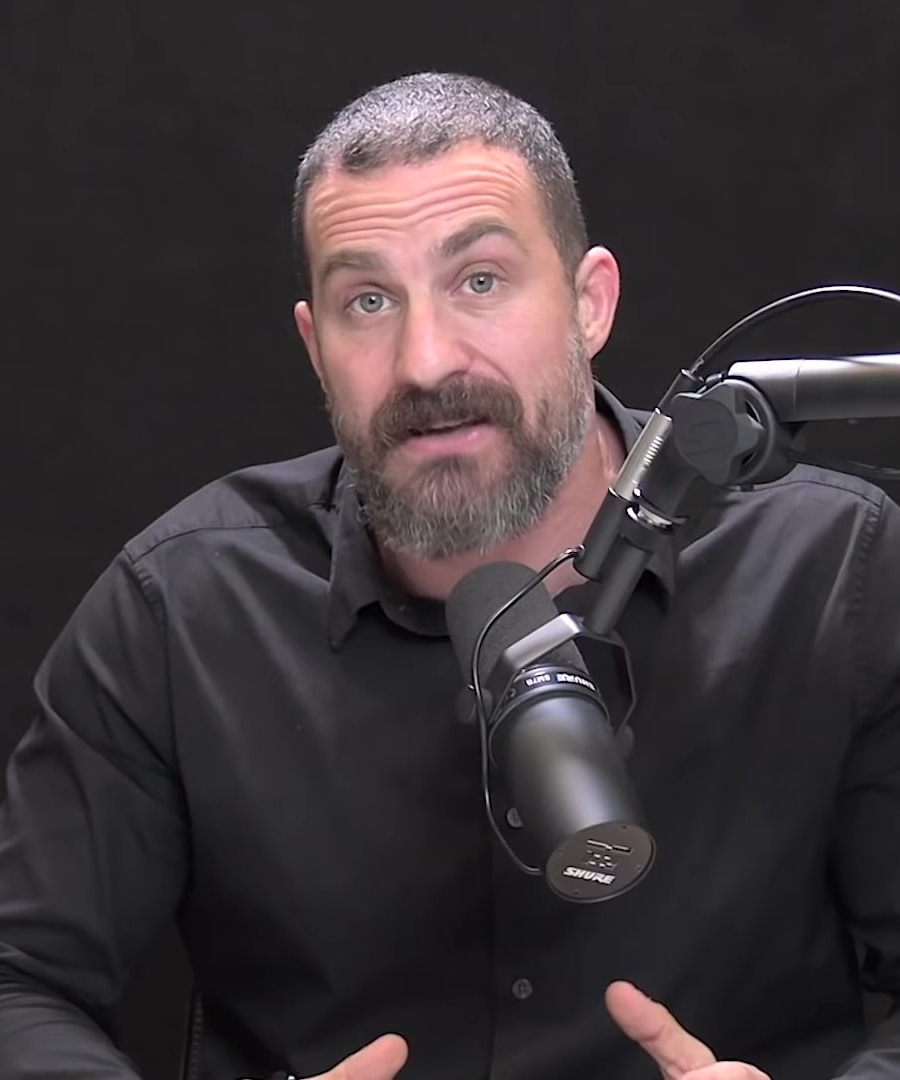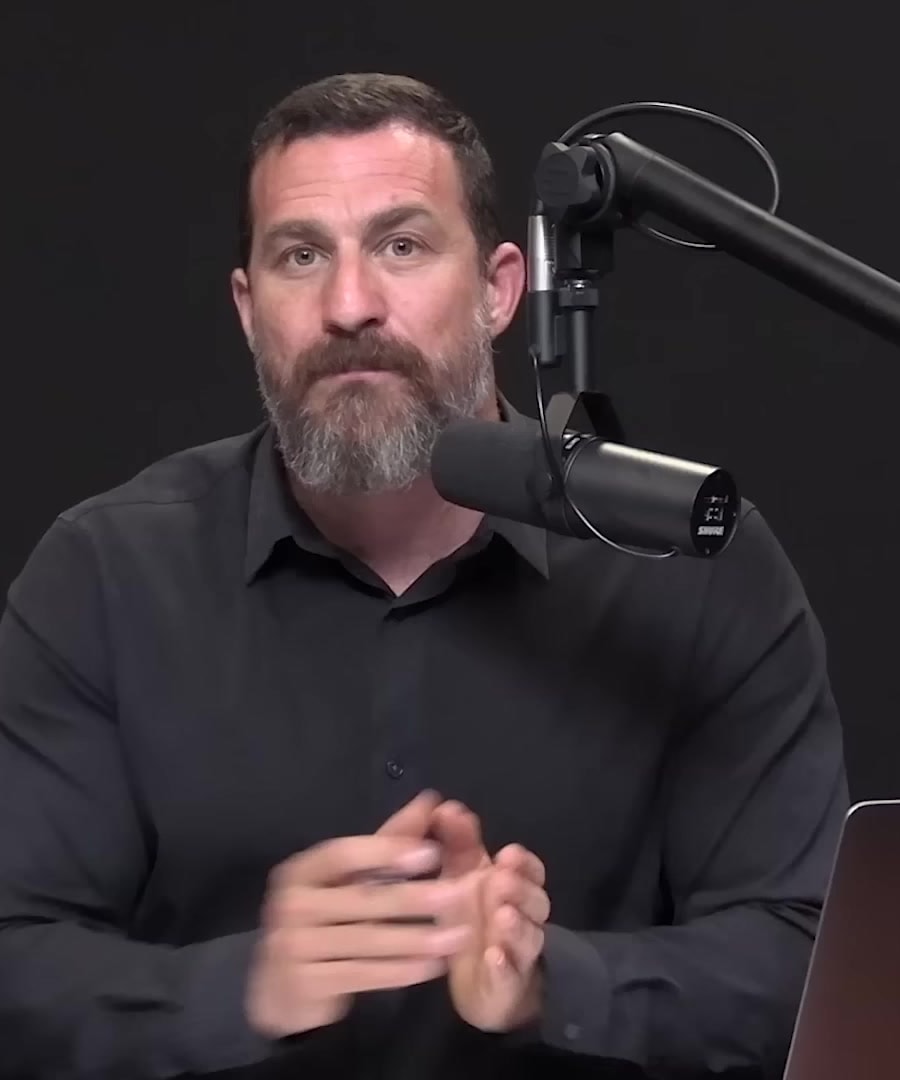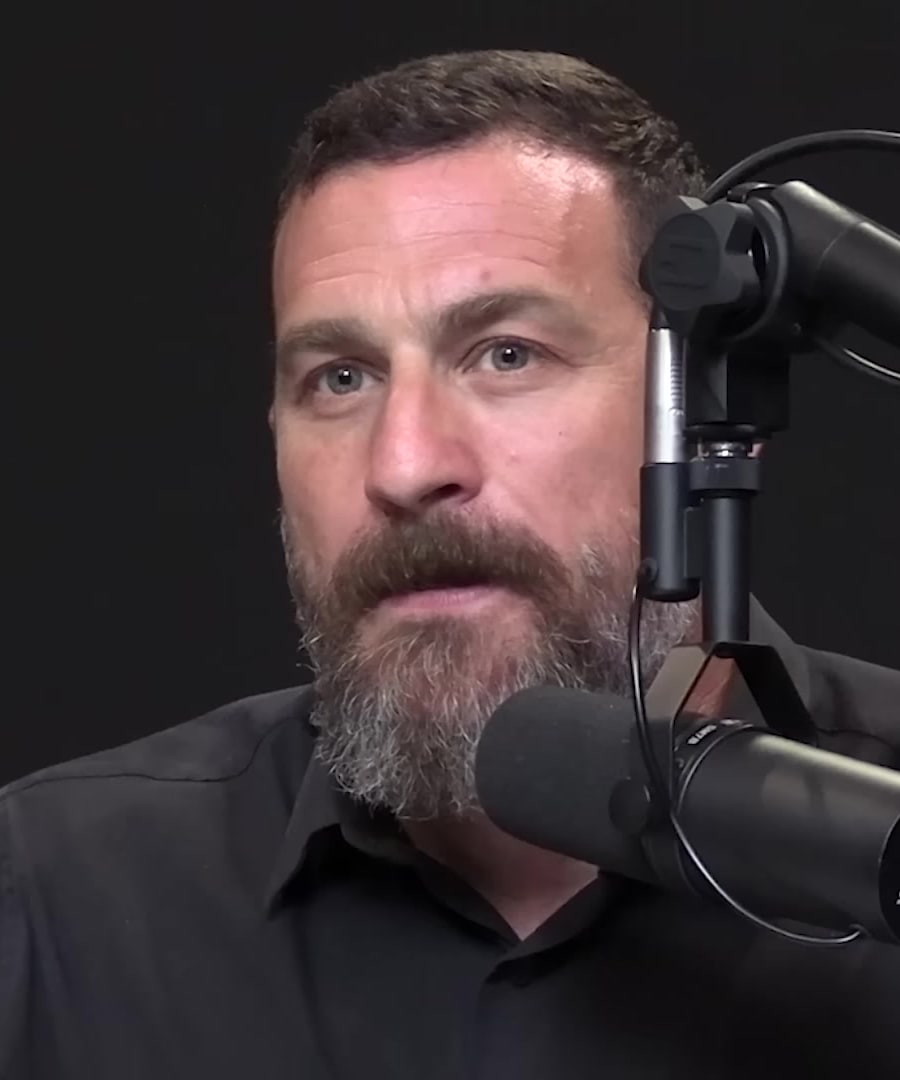huberman polyvegal
Sources:
offers detailed explanations and clarifications about the polyvagal theory on his podcast, the .
In an episode, , he explains that the polyvagal theory acknowledges multiple branches of the vagus nerve—the dorsal vagus (linked to alertness and activation) and the ventral vagus (associated with empathic behaviors). However, he notes that while the theory has intriguing concepts, some aspects do not align with current anatomical understanding. Huberman emphasizes the importance of accurate physiological knowledge and warns against overgeneralized psychological diagnoses based on vagal activity 1.
Additionally, Huberman discusses the vagus nerve's significant role in brain-body communication and regulating emotional states. He explains its dual sensory and motor pathways, highlighting how it senses internal states (i.e., gut, lungs, heart) and influences motor control in these areas. He cautions against the oversimplified idea of broadly "stimulating the vagus" and advises understanding specific neural circuits to achieve desired outcomes safely 2 3.
These insights help demystify the polyvagal theory and emphasize the need for precise application in psychological and physiological contexts.
RELATED QUESTIONSSummarize How Foods and Nutrients Control Our Moods | Huberman Lab Podcast #11
In the , delves into the intricate relationship between diet, nutrients, and emotional health. Key points include:
- Emotions and the Vagus Nerve: The episode discusses how emotions are linked to mind-body alignment and the critical role of the vagus nerve in this process.
- Nutrient Impact: Huberman explains how various nutrients and neurochemicals, such as dopamine and serotonin, affect mood. He underscores the importance of understanding these connections to address conditions like depression and anxiety effectively.
- Polyvagal Theory: The discussion covers the polyvagal theory, which focuses on the vagus nerve's role in emotional regulation, although Huberman advises caution regarding its anatomical claims.
- Gut-Brain Connection: The episode explores how the gut and its microbiome impact mood and the effectiveness of dietary choices, such as Omega-3 fatty acids, in treating depression.
- Diet and Mental Health: Huberman highlights the interplay between gut sensors, nutrient sensing, and craving sweet foods, as well as how these factors can lead to anxiety.
The episode provides insights into how food and supplements can be used to optimize mental health and emotional well-being 1 2.
RELATED QUESTIONShuberman polyvegal theory
Sources:
provides a nuanced view of the Polyvagal Theory in his discussion on the . While Stephen Porges popularized the theory, Huberman critiques some of its anatomical claims. He appreciates that the theory acknowledges the vagus nerve's multiple branches but notes discrepancies between the supposed dorsal and ventral pathways and modern anatomical knowledge.
Huberman emphasizes that many public interpretations of the Polyvagal Theory may inaccurately link psychological states directly to specific vagus nerve activities, leading to oversimplified diagnoses and treatments 1. He also points out the vagus nerve's immense role in emotional regulation, with its extensive connections to the brain, gut, heart, lungs, and immune system. These two-way sensory and motor pathways are crucial for understanding brain-body interactions 2.
Ultimately, Huberman stresses the importance of precise language and practical applications when discussing the vagus nerve, warning against the general notion of "stimulating the vagus" without understanding specific circuits and pathways 3.
RELATED QUESTIONSWhat's the role of the vagus nerve?
Sources:
The vagus nerve plays a critical role in connecting the brain and the body, influencing numerous physiological and emotional functions. explains that it regulates our emotional states through its sensory and motor pathways, connecting the brain with organs such as the heart, lungs, gut, and immune system 1.
Key roles of the vagus nerve include:
-
Regulation of Heart Rate: The vagus nerve helps slow down the heart rate, particularly through exhalation. This process, known as respiratory sinus arrhythmia, can be trained to improve vagal tone and manage stress 2.
-
Emotional and Behavioral Activation: Contrary to the common belief that vagal stimulation always induces calmness, notes that it can also increase alertness and dopamine release, depending on the type and context of stimulation 3.
-
Digestive Processes: It controls digestive functions by managing stomach acid production, digestive enzyme secretion, and gut motility. Disruptions in vagal tone can lead to digestive issues and are associated with conditions like anxiety and depression 4.
-
Photophobia and Immune Response: The vagus nerve influences the perception of light intensity and can trigger photophobia and headaches during illness to encourage rest and recovery 5.
-
Two-Way Communication: The vagus nerve operates bidirectionally, sending information from the body's organs to the brain and vice versa. This communication pathway is vital for maintaining homeostasis and responding to changes within the body 1.
Overall, the vagus nerve is essential for managing both physical and emotional health, facilitating complex interactions between the brain and various organ systems.
RELATED QUESTIONS-
huberman depression
Sources:
provides extensive insights into depression through several discussions on the .
Clinical and Major Depression
- Two Types: Depression is primarily categorized into major depression (unipolar) and bipolar depression. Major depression affects about 5% of the population and significantly impacts daily functioning and quality of life 1 2.
- Symptoms: Key symptoms include persistent sadness, anhedonia (inability to enjoy previously pleasurable activities), and often self-guilt. These signs differentiate clinical depression from normal sadness or disappointment 2.
- Body and Brain Connection: Depression affects both the mind and body, making activities like getting out of bed or exercising challenging. Effective management involves early routine interventions like early light exposure and physical activity 3 4.
Neurobiology and Mechanisms
- Neurochemistry: There's a critical focus on norepinephrine systems in depression. Activities that boost noradrenaline, such as cold showers and exercise, can be beneficial. Managing dopamine levels is also crucial to prevent anhedonia 5.
- Animal Models: Research often uses the model of "learned helplessness" in animals to study depression, where animals are observed for their persistence in adverse conditions. This model helps in understanding the behavioral parallels in human depression 6.
Treatments
- Behavioral and Pharmacological: Treatments include behavioral therapy, medication, supplementation, diet, and exercise. The exact mechanisms of some treatments remain partially understood, but they show promising results 1.
- Psychedelics: Emerging therapies involve psychedelic treatments combined with transcranial magnetic stimulation (TMS). These methods are being explored for their potential in treating severe mood disorders and depression by modifying brain circuitry 7.
Practical Tools and Recommendations
- Routine Building: Establishing a routine that includes early light exposure, physical activity, and controlled pleasure-seeking can prevent and manage depression 5.
- Self-Responsibility: This shift requires individuals to take active responsibility for their mental health by making lifestyle changes and seeking professional help when necessary 4.
For further details, listening to the on the is recommended.
RELATED QUESTIONSWhat treatments does Huberman recommend?
Sources:
has recommended several treatments for depression and other conditions. Here are some of the key recommendations:
Light Therapy
- Red Light Therapy: Huberman suggests using red light therapy, especially for those living in northern regions with limited morning light. Red light panels or beds can provide the appropriate wavelengths of light beneficial for health 1.
Salt Intake
- Daily Salt Recommendations: Huberman shares insights from Dr. James DiNicolantonio's book "The Salt Fix," recommending 8 to 12 grams of salt per day (3.2 to 4.8 grams of sodium), which is higher than current guidelines. He emphasizes maintaining a healthy sodium-to-potassium ratio and adequate magnesium intake for overall health 2.
Play for Mental Health
- Engaging in Play: He recommends at least one hour of pure play per week to promote neuroplasticity and mental health. Play should be a low-stakes activity that isn't about proficiency but about exploration and enjoyment 3.
Psychedelic Treatments
- Psychedelics and Neurostimulation: Huberman discusses combining transcranial magnetic stimulation (TMS) with psychedelic treatments like psilocybin, MDMA, and ketamine. These treatments are being researched for their potential to treat depression and other mood disorders effectively 4.
Supplements
- Numerous Supplements: Although not necessary for everyone, he notes that many people find significant benefits from supplements for improving sleep, hormone support, and focus. He endorses the use of high-quality, single-ingredient formulations for their effectiveness and cost-efficiency 5.
These treatments reflect a range of approaches from lifestyle changes to advanced clinical therapies. Always consult with a healthcare provider before starting any new treatment regimen.
RELATED QUESTIONSWhich supplements does Huberman recommend?
Sources:
recommends various supplements to improve sleep, focus, learning, and overall health. Here are some of his key recommendations:
Sleep
- Magnesium Threonate: Known to help with sleep quality and brain health 1.
- Apigenin: A derivative of chamomile, beneficial for inducing sleep 1.
- Theanine: Sometimes suggested to improve sleep onset and quality 2.
Cognitive Performance
- L-Tyrosine: Helps to augment dopamine, which enhances focus and cognitive performance 3.
- Creatine: Mentioned as beneficial for both physical and mental performance 4.
Hormone Function
- L-Carnitine: Recommended for various health benefits, including hormone support 3.
- Vitamin D3: To ensure adequate levels of hormones, particularly beneficial in regions with less sunlight 5.
General Health
- Foundational Supplements: These include multivitamins and minerals to cover any potential dietary deficiencies 6.
Overall Approach
Huberman emphasizes the importance of using high-quality, single-ingredient formulations to identify what works best for individual needs. He suggests partnering with reliable supplement providers to ensure product quality and consistency 7 3.
For a detailed list, you can visit LiveMomentous and Thorne to see the specific supplements he uses and recommends 7 8.
RELATED QUESTIONShuberman anxiety
Sources:
has discussed anxiety extensively on his . Here are some key insights:
Role and Nature of Anxiety
- Anxiety serves as a readiness mechanism, mobilizing us into action, not just for self-preservation but also for moving towards goals 1.
- It acts as an activating energy, often least comfortable when standing still, indicating it pushes us toward engagement and action 1.
- Anxiety's characteristic features include a narrowed visual field and physical sensations like shaking, which were evolutionarily designed to keep us vigilant and active 1.
Managing and Overcoming Anxiety
- Balancing anxiety is essential. Too little anxiety can reduce motivation, while too much can narrow cognitive focus and diminish happiness 2.
- Effective management involves recognizing anxiety and using it productively without letting it dominate one's behavior or decisions 3.
- Exposure to the source of anxiety can help in overcoming trauma. For instance, shared a personal story of facing a diving trauma head-on to mitigate its effects 4.
Psychological and Biological Underpinnings
- highlights that some anxiety is beneficial and keeps us vigilant, but excessive anxiety requires addressing both biological predispositions and unconscious influences 5.
- Cognitive behavioral techniques and understanding one's defense mechanisms can aid in managing anxiety and improving mental health 6.
Observations:
- Anxiety and how we handle it profoundly influence problem-solving and creativity. By confronting and working through anxiety, we can achieve better outcomes and innovation 3.
These insights illustrate that views anxiety as a vital component of human experience, offering strategies to leverage it for better performance and mental health.
RELATED QUESTIONSWhat are some specific strategies to manage anxiety?
Sources:
Here are some specific strategies from experts to manage anxiety effectively:
Lifestyle Adjustments
- Diet and Hydration: Eating mostly whole foods (fruits, vegetables, meat) while limiting caffeine, sugar, and alcohol can lower anxiety levels. Staying hydrated is also crucial 1.
- Exercise and Sleep: Regular exercise and ensuring good quality sleep can help maintain a stable nervous system, reducing anxiety 2.
Mindfulness and Breathing
- Deep Breathing: Techniques like 5 seconds inhale and 10 seconds exhale can activate the body's relaxation response, lowering anxiety. Breathing deeply through the diaphragm is essential for effective results 3.
- Mindfulness and Sensory Awareness: Engaging with the world through your five senses and staying present can mitigate anxiety. Techniques like gently rubbing your hand or focusing on a minor physical sensation can help 4.
Cognitive Techniques
- Cognitive Restructuring: This involves identifying and challenging negative thought patterns that fuel anxiety. It's a part of Cognitive Behavioral Therapy (CBT) and includes steps like identifying the negative thought, challenging it, and replacing it with a more balanced thought 5.
- Exposure Therapy: Gradually exposing yourself to the source of anxiety, allowing you to become more comfortable with it over time, is a helpful strategy 5.
Practical Techniques
- Screen Time Management: Reducing screen time and taking breaks from devices can significantly decrease stress levels 1.
- Physical Touch: Simple actions like pulling out a few arm hairs or gently stroking your hand can bring you back to the present moment and reduce anxiety 4.
- Support System: Having a training partner, mental health professional, or a supportive friend can provide additional layers of focus and comfort 6 7.
Therapy and Professional Support
- Professional Help: Engaging with a therapist can help address underlying causes of anxiety and provide coping tools. Techniques like talk therapy, EMDR, and even some psychedelic modalities under professional guidance have shown benefits 8.
By incorporating these strategies, you can manage and reduce anxiety effectively. Always consider consulting a healthcare professional for personalized advice.
RELATED QUESTIONSHow does exercise reduce anxiety?
Sources:
Exercise reduces anxiety through several mechanisms:
Immediate Effects
- Release of Neuropeptide Y: Low to moderate intensity exercise releases neuropeptide Y, a neurochemical that bathes the brain's fear centers, helping to reduce anxiety immediately after the workout 1.
- Completion of the Stress Cycle: Exercise utilizes and helps expel stress-related chemicals like cortisol and adrenaline through increased breathing and sweating, which completes the body's stress response cycle and reduces anxiety 2.
Long-Term Benefits
- Strengthening the Stress Response System: Regular exercise trains the body's stress response, enhancing the balance between the sympathetic (fight or flight) and parasympathetic (rest and digest) systems. This makes the body more resilient to stress over time 3.
- Exposure Therapy for Panic Symptoms: Vigorous exercise can mimic anxiety symptoms (e.g., increased heart rate, difficulty breathing), acting as a form of exposure therapy. This helps people with panic disorder become less sensitive to these symptoms over time 4.
Psychological Benefits
- Mental Focus and Presence: Exercise shifts focus away from anxious thoughts and grounds the person in the present moment through attention to movement and breath. This can break the cycle of negative thoughts associated with anxiety 5.
Chemical and Neurological Effects
- Endorphin and Neurotransmitter Release: Exercise triggers the release of endorphins and other neurotransmitters that elevate mood and contribute to a feeling of well-being, countering anxiety and depression 6 7.
By incorporating consistent, moderate exercise, you can leverage these mechanisms to manage and reduce anxiety effectively.
RELATED QUESTIONSgrounding techniques
Sources:
Grounding techniques are effective strategies to help manage anxiety and panic by bringing your mind and body into the present moment. Here are some methods from experts:
5-4-3-2-1 Grounding Method
This method involves focusing on your senses to anchor yourself:
- Five things you see
- Four things you feel
- Three things you hear
- Two things you smell
- One thing you taste
This technique helps to interrupt racing thoughts and panic by engaging your senses and bringing your attention to the present 1 2.
Grounding in Nature
Connecting physically with the earth is another effective grounding method. This can involve:
- Walking barefoot on grass or soil
- Sitting or lying on the ground
- Swimming in a natural body of water
These activities can help you feel more centered and calm 3 4.
Sensory Grounding
Sensory grounding involves using strong sensory stimuli to help bring your focus back to the present, such as:
- Touching textured objects like Play-Doh or beans
- Splashing cold water on your face
- Opening a window for fresh air
This method works by engaging your senses directly, which can be especially helpful during panic attacks 5.
Breathing Exercises
Incorporating breathing techniques, such as the 4-7-8 method (inhale for 4 seconds, hold for 7 seconds, exhale for 8 seconds), alongside sensory grounding can further enhance the calming effects 5.
Body Awareness
Simply becoming more aware of your physical presence and sensations can also help. This can be done by:
- Paying attention to how your body feels
- Placing your hand on your heart or tracing your finger on your hand to connect with your body
- Focusing on the sensations in your feet touching the ground
These practices can help establish a sense of safety and presence 6 7.
By practicing these grounding techniques, you can manage anxiety and panic more effectively, gradually learning to stay present and reduce distress.
RELATED QUESTIONSmel robbinson techniques
Sources:
Mel Robbins, a well-known motivational speaker and author, offers several powerful techniques aimed at improving mental wellbeing and productivity. Here are some of her key methods:
5-Second Rule
The 5-second rule is perhaps Mel Robbins' most famous technique. It involves counting backward from five to one (5-4-3-2-1) to overcome hesitation and initiate action. This method helps bypass doubts and fears by triggering movement before your brain can talk you out of it 1. It's useful for everything from starting new tasks to handling anxiety and making crucial decisions.
54321 Grounding Method
In collaboration with experts like Dr. Judith Joseph, Robbins also discusses the 54321 grounding method. This technique helps anchor you in the present moment by using your senses:
- 5 things you see
- 4 things you feel
- 3 things you hear
- 2 things you smell
- 1 thing you taste
Engaging in this exercise can help reduce anxiety and improve focus 2.
4-7-8 Breathing Technique
Robbins recommends the 4-7-8 breathing technique to manage stress and anxiety. This involves inhaling for 4 seconds, holding the breath for 7 seconds, and exhaling for 8 seconds. This method helps activate the body's relaxation response, making it easier to remain calm in stressful situations 3.
Stop, Breathe, Be
This simple mindfulness exercise encourages taking a moment to stop, take a deep breath, and ground yourself by feeling the sensations of your feet on the floor or your posture. It's a quick way to reconnect with your body and reduce stress 4.
Connecting with Others
Robbins also emphasizes the importance of small acts of connection to boost confidence and mood. Simple gestures like complimenting someone's nails or asking for book recommendations can help forge meaningful connections and broaden your social circle 5.
Reframing Anxiety
To handle performance anxiety, Robbins suggests reframing nervousness as excitement. This technique involves visualizing positive outcomes and recalling happy moments to shift your mindset from fear to positive anticipation 6 7.
These techniques, shared on the , provide practical, actionable steps to improve mental health and productivity.
RELATED QUESTIONSmel robbins techniques
Sources:
Mel Robbins offers a variety of techniques designed to help improve mental resilience, overcome anxiety, and boost productivity. Here are some of her notable methods:
5-Second Rule
The 5-Second Rule is Mel Robbins' signature technique. It involves counting down from five to one (5-4-3-2-1) to break the cycle of hesitation and prompt immediate action. This method helps push through self-doubt and fear, allowing you to take decisive action quickly 1.
54321 Grounding Method
This grounding technique, introduced by Dr. Judith Joseph on , involves engaging all five senses to help anchor you in the present moment:
- 5 things you see
- 4 things you feel
- 3 things you hear
- 2 things you smell
- 1 thing you taste This method aims to reduce anxiety and heighten awareness by focusing on sensory input 2.
4-7-8 Breathing Technique
To manage stress and protect your energy, Robbins suggests the 4-7-8 breathing technique. It involves inhaling for 4 seconds, holding the breath for 7 seconds, and exhaling for 8 seconds. This pattern helps activate the body’s relaxation response, calming the nervous system 3.
Stop, Breathe, Be
This simple mindfulness exercise encourages pausing to take a deep breath and reconnecting with your surroundings. It's a quick way to reset and manage stress, especially during hectic or stressful moments 4.
Connecting with Others
Robbins emphasizes the value of small social interactions. Complimenting someone's appearance or asking for book recommendations are small steps that can enhance your social skills and mood while fostering meaningful connections 5.
Reframing Anxiety as Excitement
For tackling performance anxiety, Robbins advises reframing nervousness as excitement. By visualizing positive outcomes and transforming fear into eager anticipation, this method can help manage anxiety and boost performance 6 7.
Embracing Change
Robbins discusses handling major life changes by planning ahead and setting small, achievable tasks. This approach, coupled with grounding techniques and reminders of the temporary nature of change, can help mitigate anxiety and foster a smoother transition 8.
These techniques can be practical tools to enhance your mental and emotional wellbeing, improving both your personal and professional life.
RELATED QUESTIONSAre there other techniques Mel Robbins recommends?
Sources:
Mel Robbins shares several other effective techniques to enhance well-being, productivity, and connections:
54321 Technique
In addition to the 5-Second Rule for immediate action, Robbins emphasizes its use in various situations, such as handling conflicts or motivating oneself to exercise and network. She calls this simple method the secret to taking decisive action regardless of doubts or fears 1.
Everyday Kindness
Robbins suggests small acts like complimenting strangers on their nails or shoes, or starting casual conversations (e.g., asking for book recommendations) to build social connections. These minor interactions can boost your mood, enhance social skills, and potentially open up new opportunities 2.
Protecting Your Energy
For stressful or negative encounters, Robbins recommends the 4-7-8 breathing technique. This involves inhaling for 4 seconds, holding for 7, and exhaling for 8 seconds to activate the body's relaxation response. This technique aims to protect your energy levels during challenging interactions 3.
Mindful Stress Management
Robbins highlights the importance of taking real breaks instead of constant re-engagement with devices. Techniques like heart-centered breathing, short walks, and the stop-breathe-be method are suggested for resetting one's mind-body connection 4.
Building Social Fitness
To maintain and improve relationships, Robbins advocates for daily habits like sending a quick text to friends or scheduling regular catch-ups. These small actions, described as building "social fitness," can significantly enhance one’s social connections and overall well-being 5.
These additional techniques collectively support mental health, productivity, and relationship building, aligning with Robbins' goal of empowering individuals to lead more effective and fulfilled lives.
RELATED QUESTIONShubeman lab
The podcast, hosted by , delves into various topics related to neuroscience and its connection to daily life. Each episode uncovers scientific insights into mental and physical health, emotions, learning, motivation, and more. Huberman, an associate professor at Stanford University School of Medicine, brings together experts from various fields to discuss cutting-edge research and practical applications.
Some Topics Covered:
- Mental Health
- Physical Health
- Fertility
- Longevity
- Learning
- Motivation
- Emotions
- Psychedelics
- Performance
- Creativity
- Nutrition
- Fitness
Notable Guests
- Adam Grant
- Natalie Crawford
- Michael Eisenberg
- Priscilla Chan
- Lisa Feldman Barrett
- Chris Voss
- Paul Conti
This podcast is a rich resource for anyone interested in leveraging neuroscience to optimize their life and performance.
RELATED QUESTIONSWhat are some key episodes?
Here are some key episodes of the podcast:
-
This episode delves into the science of dopamine and its role in motivation, addiction, and learning. It provides practical tools to boost dopamine levels naturally and strategies to overcome procrastination.
-
Focused on mental training and visualization, this episode explains how to effectively use these techniques to enhance learning, motor skill development, and neural plasticity.
-
This episode outlines a comprehensive fitness plan, encompassing endurance workouts, resistance training, recovery techniques, and the importance of sleep and nutrition for overall health.
-
Discusses the power of play in neuroplasticity and learning. It highlights how engaging in playful activities can enhance creativity, social skills, and emotional resilience.
-
Provides tips on arranging your workspace to maximize productivity and focus, including lighting, posture, visual setup, and utilizing background noise and binaural beats to enhance concentration.
These episodes offer a broad range of insights into optimizing mental and physical health based on cutting-edge neuroscience research.
RELATED QUESTIONS-
Summarize Using Play to Rewire & Improve Your Brain | Huberman Lab Podcast #58
Sources:
In , discusses the profound impact of play on neuroplasticity. Here are the key insights:
-
Play and Neuroplasticity: Play is identified as a crucial mechanism for engaging neuroplasticity at any age. It involves returning to natural practices and tools that the nervous system has evolved to use 1.
-
Mechanics of Play: Play helps in learning the rules of life at different stages, testing real-world functions in low-stakes environments. This triggers chemicals like Brain-derived neurotrophic factor, aiding in brain circuit rewiring 1.
-
Play Throughout Life: It's emphasized that play extends beyond childhood into adulthood. The process of play remains fundamental for neural development and adaptation 2.
-
Recommendation: Huberman suggests engaging in at least one hour of pure play per week. This should be a novel and exploratory activity, which can lead to beneficial neurochemical changes 3.
-
Impact on Development: Play in childhood heavily influences behavior and cognitive functions in adulthood. Engaging in play as adults can expand and strengthen neural circuits 4.
-
Practical Guidance: For those struggling with play, it is recommended to focus less on outcomes and more on the process, even if it feels uncomfortable initially. Books like "Play It Away: A Workaholic’s Cure for Anxiety" by Charlie Hoehn can provide additional guidance 3.
Overall, play is presented as a powerful tool for brain health and adaptability throughout life.
RELATED QUESTIONS-
Summarize Optimizing Workspace for Productivity, Focus, & Creativity | Huberman Lab Podcast #57
Sources:
In , delves into various strategies for creating an efficient work environment. Here are the main points:
Key Concepts:
-
Variables of Workspace Optimization:
- Clutter and Personal Preferences: Acknowledges different tolerances for clutter and emphasizes the importance of personalized workspace setups 1.
- Vision and Light: Discusses the impacts of light, noise, and visual environment on focus and productivity. Suggests tailoring these elements to individual needs 1.
- Physical Arrangement: High ceilings foster creativity (Cathedral Effect), while low ceilings enhance focus on detailed tasks 2.
-
Movement and Interruptions:
Recommendations:
-
Tailored Environment:
-
Practical Tips:
By applying these principles, individuals can enhance their productivity, focus, and creativity in various work settings.
RELATED QUESTIONS-
Summarize Leverage Dopamine to Overcome Procrastination & Optimize Effort | Huberman Lab Podcast
Sources:
In , explains how harnessing the dynamics of dopamine can help overcome procrastination and enhance motivation. Key strategies and concepts include:
Key Concepts:
-
Dopamine Dynamics:
- Leveraging both dopamine peaks and troughs can transform effort into a rewarding process, making friction itself feel rewarding 1.
- The concept of a "growth mindset," introduced by Dr. Carol Dweck, is crucial. Viewing challenges as opportunities for growth, rather than insurmountable obstacles, can enhance motivation and performance 1.
-
Procrastination and Motivation:
- Procrastination often stems from a combination of low dopamine baseline and avoidance of perceived effort. Understanding that a dopamine trough (low) is a signal to seek new goals can help break this cycle 2.
- Common procrastination tactics often involve completing other tasks as a way to avoid the main goal, which can delay motivation and lead to a pseudo panic as deadlines approach 3.
Strategies:
-
Boosting Dopamine:
- To overcome a lack of motivation, one can either wait for natural motivation to return or engage in effortful activities that can steepen the dopamine trough, accelerating the return to motivated states 4.
- Engaging in difficult tasks can teach the brain that effort is manageable and activates the neurochemical systems that boost motivation 4.
-
Applying Effort as Reward:
- Transforming the perception of effort from a chore to a reward can be key. This involves learning to recognize and appreciate the neurochemical rewards released during the effort process itself 4.
Through understanding and manipulating the biological mechanisms of dopamine, individuals can improve their ability to start and persist in tasks, overcoming procrastination and achieving their goals.
RELATED QUESTIONS-
trauma responce
Sources:
Discussing trauma response, several experts highlight the complexities and mechanisms involved. Here are key insights from various podcasts:
Adaptive Nature of Trauma Responses
Dr. MaryCatherine McDonald explains that the trauma response is fundamentally adaptive. It is designed to help keep individuals alive, born from a will to survive. This understanding is crucial for healing, as it helps peel away layers of shame often associated with trauma. Despite its initially adaptive nature, trauma can become maladaptive over time and requires integration into one's experiences to facilitate healing 1 2.
Biological and Emotional Responses
Dave Asprey and Peter Crone discuss how trauma responses can be both biological and emotional. They highlight hypervigilance as a common reaction, linked not only to emotional trauma but also to physical conditions like brain injuries or toxic mold exposure. This response can manifest as increased sensitivity to perceived threats, impacting daily functioning significantly 3.
Nervous System and Healing
Haesue Jo and Rob Dial emphasize that trauma triggers are indicators of unresolved memories needing organization. Therapy can help individuals become aware of their trauma responses and work through these triggers. Recognizing these bodily signals is vital for understanding and healing from trauma 4.
Gender Differences in Stress Responses
Dr. Sara Szal Gottfried notes that men and women metabolize trauma differently due to variations in their biological stress responses. Women are more likely to engage in freeze or fawn responses rather than fight or flight, which is often seen in men. Understanding these differences can help tailor better trauma treatments for different individuals 5.
Long-term Impact of Childhood Trauma
Omid Naim discusses how unresolved childhood trauma can lead to chronic states of either overactivation or underactivation of the nervous system, affecting individuals' ability to cope with stress throughout their lives. This can manifest as tendencies toward workaholism or other societal-sanctioned ways of regulating a dysregulated nervous system, perpetuating a cycle of trauma 6.
These insights collectively stress that understanding the adaptive roots of trauma responses and recognizing the varied ways individuals react to trauma is pivotal for effective healing and recovery.
RELATED QUESTIONSbehavioral science statistics
Sources:
Here are some insights from experts on the role of statistics in behavioral science:
Role of Data in Behavioral Science
William Davies discusses how big data and behavioral science aim to predict and manage human behavior through extensive data collection. Historically, this approach dates back to early behaviorism, which sought to govern people by observing their behavior rather than understanding them deeply. Although this method faced criticism and evolved over time, the current wave of big data reignites similar hopes of relying on data to solve moral and societal issues 1.
Practical Applications and Causality
Dr. Grace Lordan emphasizes that behavioral science focuses on understanding why people behave the way they do and seeks to establish causality. Researchers often start with controlled lab experiments and then attempt to replicate these findings in real-world settings like companies or policy arenas. This process highlights the importance of data science skills and the need for empirical validation in varied contexts to ensure reliability 2.
Predictability and Human Behavior
Charles Isbell explains that by analyzing the distribution of actions and behaviors, researchers can achieve high accuracy in predicting human behavior. This process involves clustering individuals based on their actions, revealing that people are highly predictable, although they often dislike being labeled as such. He notes that while routine behaviors are predictable, unique reactions to extraordinary situations also define human individuality 3.
Impact on Policy and Society
Maya Shankar shares an example of behavioral science influencing policy during the Obama administration. Insights from behavioral science and behavioral economics were used to automatically enroll low-income children in the national school lunch program. This intervention aimed to address the gap where eligible children were not benefiting from the program due to systemic barriers, showcasing how data-driven insights can drive impactful policy changes 4.
These insights underline the significance of data and statistical methods in understanding, predicting, and influencing human behavior in behavioral science.
RELATED QUESTIONSelizabeth bauer
Sources:
It appears that there is no information on a person named "Elizabeth Bauer." However, similar names were found:
-
Susan Bauer
-
Elizabeth Day
- English novelist, journalist, broadcaster, and podcaster.
- Host of the podcast "How to Fail with Elizabeth Day." She has written six books and was a feature writer for The Observer from 2007 to 2016 3.
-
Elizabeth Cline
- Journalist and author focusing on sustainable fashion.
- Known for publications like "Overdressed" and "The Conscious Closet". Her work discusses fast fashion, ethical brands, and environmental impacts 4.
-
Elizabeth Kolbert
- Pulitzer Prize-winning environmental journalist.
- Notable works include "The Sixth Extinction: An Unnatural History" and "Under a White Sky: The Nature of the Future" 5.
If you are looking for specific insights or information from any of these individuals, please let me know!
RELATED QUESTIONS-
elizabeth bauer statistics
There are no available clips or information specifically about an Elizabeth Bauer in relation to statistics. If you have any other details or aspects you are interested in, please share, and I will assist you in finding relevant information!
RELATED QUESTIONSWho are other experts in statistics?
Sources:
jordan peterson
Sources:
While Jordan Peterson is extensive in psychology and public intellectual discourse, other experts in statistics bring more specialized knowledge. Here are some notable figures in the field of statistics:
- Andrew Gelman: A professor at Columbia University, well-known for his work in Bayesian statistics, multilevel modeling, and political methodology.
- Nate Silver: Founder of FiveThirtyEight, renowned for his work in election forecasting and probabilistic modeling.
- Hadley Wickham: Chief Scientist at RStudio and author of several packages for the R programming language, including ggplot2, dplyr, and tidyr.
- Bradley Efron: A professor at Stanford University, best known for his work on the bootstrap method.
- David Spiegelhalter: A British statistician who focuses on the public understanding of statistical science.
If you still want to explore any discussions or thoughts on statistical concepts by Jordan Peterson, let me know, and I can look into specific data where he may have touched upon such topics.
RELATED QUESTIONSTell me about Jordan Peterson
Sources:
is a Canadian psychologist, author, and media commentator. He gained significant attention in the late 2010s for his views on cultural and political issues, which are often described as conservative. Peterson, however, identifies as a classic British liberal and a traditionalist.
Notable Appearances:
- Conversations with Tyler
- Impact Theory
- Maintenance Phase
- Jocko Podcast
- The Jordan B. Peterson Podcast
- The Diary Of A CEO
